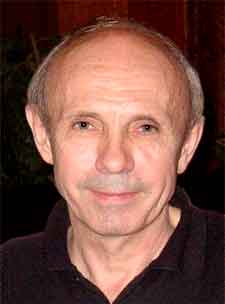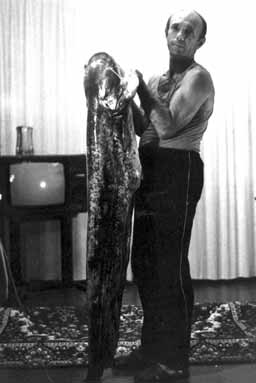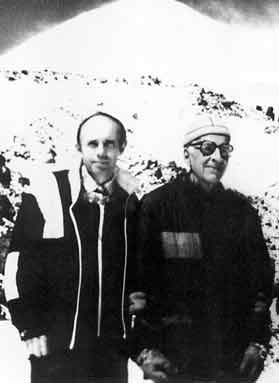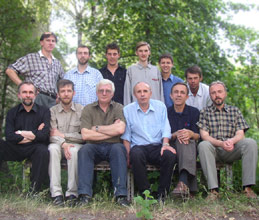
Yuri Georgievich Zdesenko was the founder and the leader of the group from the very beginning in 1971 and up to 2004 when he suddenly died during operation on stomach because of the heart's halt.
He was born on October 6, 1943 in Chernigov region of Ukraine. In 1970 he was graduated from Department of Physics of the Kiev State University. He obtained degrees of Philosophy Doctor in 1981 (INR, Moscow, Russia), Doctor of Science in 1990 (INR, Kiev, Ukraine) and status of Full Professor in 2000 (INR, Kiev, Ukraine). Because of high scientific achievements, he was elected a Corresponding Member of the Ukrainian National Academy of Sciences in 2003.
He started researches in the Laboratory of Nuclear Physics of the Kiev State University (1970-1971) and in the Institute of Geochemistry and Physics of Minerals (1971-1980) where he dealt with neutron activation analysis of minerals and built up the low background set up for radiocarbon measurements. In the following he created in the Institute for Nuclear Research (Kiev) the Laboratory for Low Background Measurements (1980-1986), where, in particular, low background installations with plastic scintillators to study 2β decays of 130Te, 100Mo and 96Zr were developed. The Laboratory was transformed in further to the Lepton Physics Department of the INR (1986).
From 1983 the huge work has been fulfilled by Yuri Zdesenko and his group to build up the Solotvina Underground Laboratory of the INR which is situated in Solotvina, small town on the west of Ukraine, in salt mines on the depth of 430 m underground. Starting from 1984, series of experiments were performed in this Laboratory devoted to search for rare α and β nuclear decays and for rare or forbidden in the Standard Model effects, mainly for neutrinoless 2β decay of atomic nuclei. As the most successful, we can mention:
(1) the most stringent limits on 0ν2β decay of 116Cd with CdWO4 crystal scintillators enriched in 116Cd at 83% - in fact, one of the best world limits for this process;
(2) first observation of 116Cd 2ν2β decay;
(3) first observation of one of the rarest α decays (180W);
(4) investigation of rare 113Cd β decay;
(5) search for 0ν2β decay of 160Gd and 186W.
Among others were searches for cluster nuclear decays, nuclear transitions to super-dense state, decays of nucleons into invisible channels, decays of electron with non-conservation of the electric charge, charge-non-conserving β decays. In many cases, investigations were fulfilled in collaboration with colleagues abroad. He was author or coauthor of above 300 scientific publications for which there are near 1500 references in papers of other scientists.
Yuri was very clever, initiative and persistent person. He had a good habit: doing something, to do it on the highest level. In addition to great scientific achievements, he was Master of Sport in pentathlon. He achieved to hook fishes of the same size as he was (see photo with a fish). And, when he went to mountains, he chose to go to high heads and with good persons (see photo with Bruno Pontecorvo).
 |
 |
Big fish, near 1980 |
Together with Bruno Pontecorvo, 1987 |
 |
Yuri together with his
group (June 6, 2003). Standing are: |
Yuri's death on September 1, 2004 was very unexpected and shocking event for everyone who knew this lively man. It was significant loss not only for Ukrainian but also for world science in which he actively participated during many years. Everybody, for whom he was a teacher (see one of his last photos with his group), and all who knew him, will miss his intense interest and enthusiasm in the science and his energy in life.